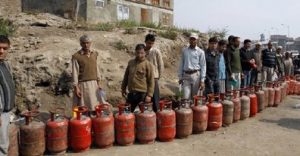New Delhi, May 17 (IANS) Global ratings agency Standard & Poor’s (S&P) Friday said its outlook on India remained negative and there is a one-in-three chance of a downgrade within the next 12 months.
“The outlook on the long-term rating remains negative,” S&P said in a report, affirming its ‘BBB minus’ long-term and ‘A-3’ short-term unsolicited sovereign credit ratings on India.
This is the lowest investment grade rating. Any downgrade would take India’s sovereign ratings to junk status, making overseas borrowings difficult and costlier.
However, the agency said there was scope to upgrade India’s sovereign ratings if the government unleashes public and private investments to spur economic growth.
“High fiscal deficits and a heavy government debt burden remain the most significant constraints on our sovereign ratings on India. Nevertheless, the government has regained control of public finances and embarked on fresh structural reforms since September 2012,” S&P credit analyst Takahira Ogawa said.
India’s long-term growth prospects, underpinned by its favourable demographic profile, and its high foreign exchange reserves support the ratings. The country’s large fiscal deficit and debt, as well as its lower middle-income economy, constrain the ratings, S&P said.
The negative outlook signals at least a one-in-three likelihood of a downgrade within the next 12 months.
“We may lower the rating if we conclude that slower government reforms than we currently expect would not lead economic growth to recover to levels experienced earlier this decade,” it said.
“Such a conclusion could come from anaemic investment growth, reversals on diesel or other subsidy measures, or inability to increase electricity supply to meet increasing demand. Similarly, if India’s general government fiscal or current account deficits worsen contrary to our expectations, we may lower the ratings,” it added.
According to the ratings agency, India’s real GDP per capita growth is likely to rebound to 4.6 percent in the current financial year from 3.6 percent in the previous year.
These are higher than those of most of its peers’ but substantially lower than about 6 percent on average over the five years up to the fiscal year ended March 2012, it said.
“We may revise the outlook to stable if the government carries through with its plans to unleash public and private investments, to implement a nationwide government sales tax, or to further trim fuel and fertilizer subsidies,” it said.
“We believe these measures could restore India’s robust growth, and thereby ameliorate its public debt trajectory,” the agency said.
The opinions, beliefs and viewpoints expressed by authors, news service providers on this page do not necessarily reflect the opinions, beliefs and viewpoints of Hill Post. Any views or opinions are not intended to malign any religion, ethnic group, club, organization, company, or individual.
Hill Post makes no representations as to the accuracy or completeness of any information on this site page.



